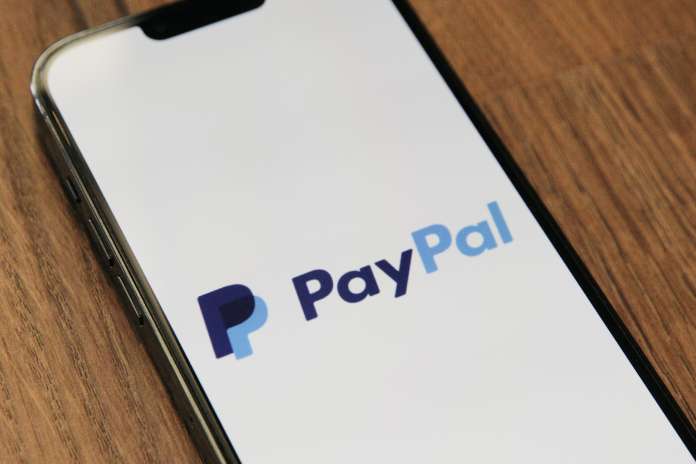PayPal Stock (NASDAQ:PYPL)
PayPal (NASDAQ:PYPL) valuations have now become appealing, with strategic growth alternatives accessible in the future. Their balance sheet quality is robust, and they have a leading market share position, which leads me to feel that the company is growing at a reasonable price. Management turnover can be beneficial, since the new management may find acquisition opportunities to restore user and transaction volume growth. Despite being a huge beneficiary of the pandemic’s surge in stay-at-home demand, where it arguably grew too quickly for its own good, the company has a strong history of following the secular growth trend in e-commerce since the eBay (NASDAQ:EBAY) spinoff, which is expected to continue for the foreseeable future.
Margin Erosion and a String of Disappointing Results
Operating margins fell from 16.8 to 13.94 from 2021 to 2022, despite volume increasing by 9% to 1.36 trillion during the same period. According to Bloomberg estimates, they have also experienced a diminishing return on invested capital since 2020, from 8.8% to 6.3%, while their WACC has climbed from 8.9% to 11.3% in the same time period, indicating declining value and market share. Since 2015, management has also made a number of overestimated earnings projections. To put it in context, over the last eight quarters, they have only had an average positive EPS surprise of +4.69% and a revenue surprise of +0.66%, indicating that they are not conservative in their forecast.
Management Turnover
Management turnover is also high, with the CEO, CFO, and CPO all leaving, creating concerns about the company’s direction. However, I feel that the new CEO change will be a positive catalyst, as Dan Schulman has proven to be a weak CEO who mismanaged the company’s growth strategy. Some of the failures included focusing on bitcoin trading and being unable to develop strategic ventures to accelerate their growth. New board changes may appear chaotic at first, but they present an opportunity to rebuild and refocus the long-term growth strategy going forward. Furthermore, it’s been about a year since activist Elliot Management came in, and there hasn’t been any significant change, other than an increased emphasis on treasury management, which has resulted in a repurchase yield of 5.8% for this year. PayPal appears to be managed in the same way as an oil firm is managed in terms of capital allocation, which is a no-no for growth valuation.
Balance Sheet Resilience and Growth
Despite everything that is wrong with PayPal, I feel that most of these concerns can be resolved in the future, thanks to their strong user retention and financial stability.
Fitch Ratings assigned an ‘A’ grade to PayPal’s most recently issued Yen notes, noting a history of prudent balance sheet management and e-commerce growth trends. When I dig a little deeper into their balance sheet health, I look for a critical ratio of intangible assets to total assets, which might carry some write-down risk, especially if growth is flatlining. In the case of PayPal stock, this is low at 15.4%. Liquidity and solvency metrics are also strong, as is the $10.6 billion cash balance. This suggests to me that they have levers to pull in terms of growing their balance sheet in order to pursue strategic projects, which I believe the new management will do in the future. The company botched the acquisition of Pinterest (NYSE:PINS) in 2021, and while the deal appeared to be expensive at first glance, I believe the strategy was sound because they would have gained access to a larger user base and built a brand around integrating social media, which tends to create network effects. I expect management will look into social media acquisitions, especially given their strong bank sheet and lower market values currently compared to 2021.
Total payment volumes have grown at a CAGR of 24% since 2015, highlighting the secular change in e-commerce. While this growth cannot be sustained indefinitely, the shift is likely in the middle innings internationally, where around 41% of PayPal’s income is generated. Net revenue per active account increased from $50.82 in 2015 to $63.22 in 2022, demonstrating that they could expand sales faster than they scaled active accounts. Management also mentioned in their most recent earnings statement that they are focusing on engagement on their current active accounts, which are now at 433 million and rising in the low single digits. The major indicators I’ll be looking for in the future are how much they can raise the number of transactions per active account and the total amount received by each active account.
Potential for Growth
Bloomberg consensus projections for the 2023 and 2024 future P/E ratios are 12.5x and 11.0x, respectively, significantly below the S&P 500 multiple of around 19x. The peg ratio is also at an all-time low, and I believe that an acceptable growth rate relative to price would be the pre-pandemic average of 3.57, given that strategic projects are pursued and they continue to profit from the international secular e-commerce trend. When compared to rivals, the enterprise value to EBITDA indicator is likewise more attractively valued, with the sector’s 5-year mean at 15.5x EV/EBITDA, reflecting a price of around $105.4 on a cautious basis.
Technical Examination
Technically, Paypal stock might be creating a base at $60-$65, but there is a lot of overhead resistance running between $70-$80, where the 50, 100, and 200-day moving averages are located. If this is overcome, I believe a test of the $100 level is possible in the following 12 months. Because of the combination of adequate fundamentals, difficult technicals, and a “show me” growth story, the strategy here would be to use options to maximize the income return by selling upside-covered calls with the goal of not being too disappointed if the shares are called away. While we wait for some clarity regarding management and their strategy, it is conceivable to extract 10-20% in income return by selling upward calls, depending on how active you are in selling these options.
Risk Elements
One point of contention with this thesis is that the industry is highly fragmented, with competitors such as Visa (NYSE:V), Block (NYSE:SQ), Stripe, American Express (NYSE:AXP), Mastercard (NYSE:MA), Google Pay (NASDAQ:GOOG), Apple Pay (NASDAQ:AAPL), and others, and there is no long-term sustainable moat that could lead to excess profits. Acquisitions or partnerships that can develop brand loyalty from their customers, which PayPal is now battling with, are common sources of growth. If the new management team behaves similarly to the incumbent and capital is wasted on poor acquisitions or initiatives, the company may experience long-term deterioration and become a value trap in the making.
Another long-term risk is that margins continue to decline as rivals stabilize or increase, resulting in additional operating margin compression. The biggest threat, in my opinion, is the continued growth of Apple and Google Pay’s market dominance. If these profit margins do not improve in comparison to rivals over the following twelve months, it will be evidence that PayPal has entered the value trap category.
Conclusion
Overall, PayPal has significant hurdles, including diminishing profits, market share, new management instability, and a fragmented sector. This, however, gives a chance for the new management to capitalize on, specifically by utilizing their strong balance sheet to build their user base and taking smart leaps in the M&A arena to consolidate their base in the long-term e-commerce trend. I feel we are in a holding pattern while waiting for the new CEO to be selected, which is why I favor an options overwriting approach to earn income premium while we wait.
Featured Image: Unsplash

















